Digital printing is a modern technique that involves printing digital files directly onto paper or other materials. It has become increasingly popular in recent years due to its versatility and cost-effectiveness. In this article, we will explain what digital printing is, how it works, and everything else you need to know about it.
The basics
Digital printing is a process that uses digital files to print onto paper or other materials. Unlike traditional printing, which involves creating a physical plate for each color used in the design, the digital process prints directly onto the material without the need for a plate. This allows for more flexibility and customization, as digital files can be easily edited and adjusted.
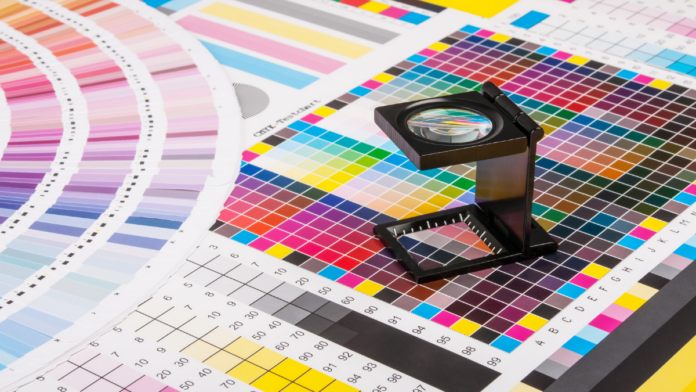
How Does It Work?
Digital printing works by transferring the digital file onto the material using inkjet or laser technology. Inkjet printing involves spraying tiny droplets of ink onto the material to create the design, while laser printing uses toner to create the design. The material is then run through a finishing process to dry the ink and make it permanent.
Advantages of Digital Printing:
- High-Quality Printing: It produces high-quality prints with sharp images and vibrant colors such as display banners
- Versatility: This method can be used to print on a wide range of materials, including paper, vinyl, fabric, and more.
- Customization: Digital printing allows for a high degree of customization, as digital files can be easily edited and adjusted. This is mainly utilized in sticker printing services
- Cost-Effective: It is more cost effective than the traditional method for small to medium-sized print runs.
- Faster Turnaround Time: It has a faster turnaround time than traditional printing since there are no plates to create which means you get services like same-day name card printing.

What are the drawback?
- Limited Color Range: Digital printing may have limitations in the range of colors that can be printed compared to traditional process.
- Less Durability: Digital prints may not be as durable as traditional prints since they rely on ink and toner rather than a physical plate.
- Special Finishes: It may not be suitable for materials that require special finishes or inks, such as embossing or foil stamping.
One of the biggest advantages of digital printing is its ability to handle variable data printing (VDP). This means that each print can be customized with unique text or images, making it ideal for direct mail campaigns or personalized marketing materials. With traditional method, each print must be the same, which can be a disadvantage when it comes to targeted marketing.
Another advantage is its eco-friendliness. Since it does not require the creation of printing plates, it produces less waste than traditional printing. It also allows for on-demand services, reducing the need for excess inventory and storage space. Additionally, many companies use eco-friendly inks and materials, making it a more sustainable option for businesses.
Key Technologies and Equipment Used in Digital Printing
Here are some key technologies and equipment commonly used in digital printing:
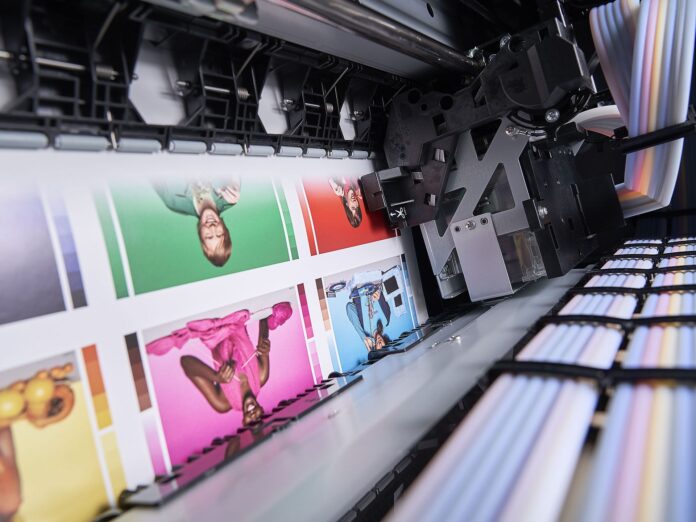
Printers and Presses
Printers are at the heart of digital printing. They use advanced mechanisms to transfer digital images onto substrates. Inkjet printers are the most prevalent in digital printing, utilizing small droplets of ink sprayed onto the substrate. They can be further categorized into various types, including aqueous inkjet, solvent inkjet, UV-curable inkjet, and dye-sublimation inkjet printers. Other types of digital presses, such as laser printers and electrophotography printers, are also used for specific applications.
Inks and Toners
Inks and toners are essential consumables. Different types of inks and toners are used based on the printing method and the substrate. For example, aqueous inks are commonly used in inkjet printing for paper-based applications, while solvent inks are used for outdoor signage. UV-curable inks offer fast curing times and durability, making them suitable for various materials. Dye-sublimation inks are employed in fabric and textile printing. Toners, typically used in laser printing and electrophotography, consist of fine particles of pigment or resin that are fused onto the substrate.
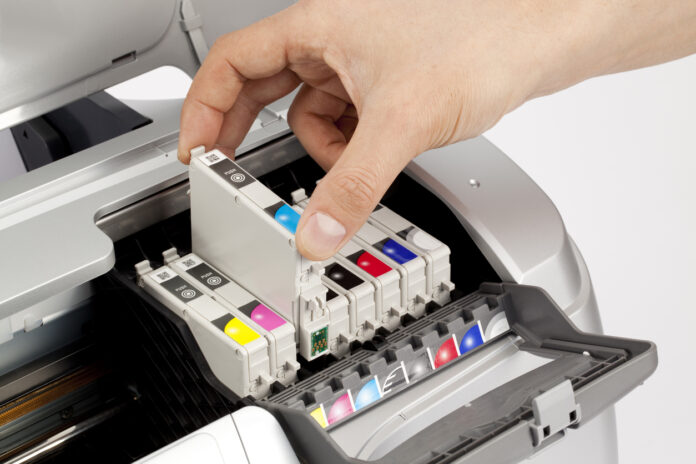
RIP (Raster Image Processor) Software
RIP software is responsible for converting digital image files into printable data. It interprets the image data and translates it into instructions for the printer or press. RIP software performs tasks such as color management, image scaling, screening, and printer control. It plays a crucial role in ensuring accurate and consistent color reproduction, optimizing print quality, and enhancing overall performance.
Color Management Systems
Color management is essential to ensure accurate color reproduction across different devices and substrates. Color management systems use color profiles and calibration techniques to maintain color consistency throughout the process. These systems enable precise color matching, proofing, and color correction, ensuring that the final prints accurately represent the original digital files.
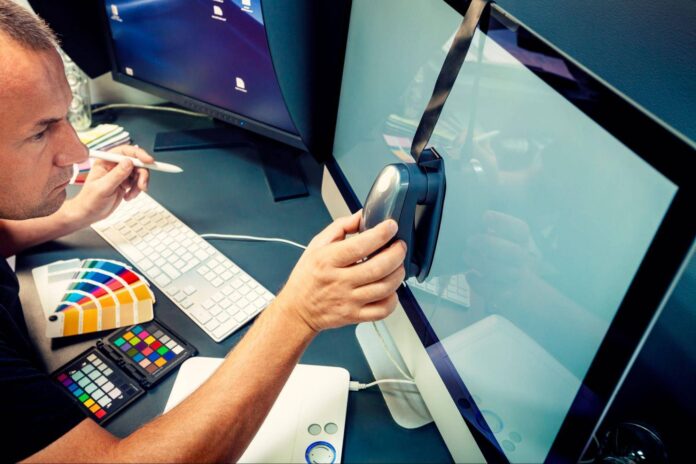
Prepress Equipment
It includes computers, scanners, and software tools for tasks such as image editing, color correction, file preparation, and imposition. Prepress equipment plays a crucial role in optimizing the digital files and ensuring that they are ready for the process.
Cutting and Finishing Equipment
After the printing process, cutting and finishing equipment is used to trim, shape, and finish the printed materials. This equipment includes cutting plotters, trimmers, laminators, binders, and other post-printing tools. These machines help achieve the desired final form of printed materials, such as business cards, posters, brochures, or labels.
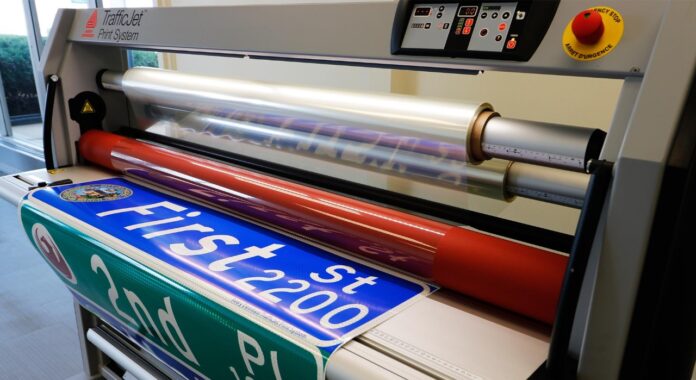
The Role of Software
In digital printing, software is an indispensable tool that facilitates numerous essential functions. From design creation to print management, the role of software is broad, sophisticated, and transformative. Let’s explore the various aspects of software in digital printing.
Design and Layout Creation
Before the printing process starts, there’s the creation of the design, and software is heavily involved in this stage. Graphic design software such as Adobe Photoshop and Illustrator, CorelDRAW, or Inkscape is used by artists and designers to create and manipulate digital artwork.
File Preparation
Once the design is created, print-ready files need to be prepared. Software is used to format the artwork correctly, setting the right resolution, color mode, and layout. This stage often involves software like Adobe Acrobat for PDFs and specialized prepress software for advanced tasks like color management and trapping.

RIP (Raster Image Processing) Software
Before digital files can be printed, they need to be translated into a format the printer can understand, which is the role of RIP software. The RIP takes the digital design file and rasterizes it, converting it into a series of dots that the printer can print. This process is crucial for maintaining the quality and accuracy of the printed image.
Printer Management
Software also plays a significant role in printer management, often referred to as print management software or a print server. This software organizes and queues print jobs, manages printer settings, tracks printing costs, and monitors printer status. It enables smooth, efficient operation of a digital printing environment, especially when multiple printers or large volumes of print jobs are involved.
Color Management
Color management software is vital to ensuring consistency and accuracy of colors between the digital design and the final printed product. It works by adjusting the colors displayed on the monitor and sent to the printer, to match a standard color model. This is important in professional settings where color precision is crucial.
Variable Data Printing
Variable data printing is a form of digital printing that involves changing elements (such as text or graphics) from one printed piece to the next, without stopping the printing process. This is typically used for personalized marketing materials, direct mail, and labels. Software automates this process, ensuring accuracy and efficiency.
In conclusion, software is a vital component in the digital printing industry, integral to almost every step of the process. It greatly enhances the capabilities of digital printers, allowing for greater precision, versatility, and efficiency in printing operations.
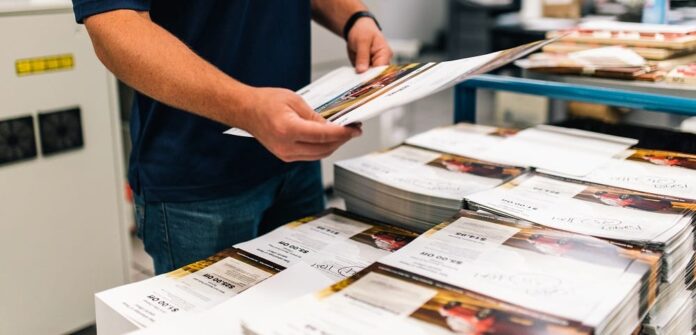
Choosing the Right Digital Printing Service for Your Needs
Selecting the ideal digital printing service for your project is crucial in ensuring a successful outcome. From cost to quality, turnaround time, and customer service, various factors come into play when making this important decision. Here are several key considerations that will help you choose the right digital printing service for your needs:
Quality of Work
The first and foremost factor to consider is the quality of work the service provides. You can assess this by requesting samples of their past projects. Pay close attention to the clarity and crispness of the printed images, the accuracy of colors, and the quality of the materials used. Online reviews and testimonials can also provide valuable insights about the quality of their work.
Range of Services
Consider the range of services the company offers. Some services specialize in specific areas like business cards, posters, or large format printing, while others offer a broad spectrum of printing services. Make sure they can cater to your specific needs, whether you require specialized, variable data, or other unique services.
Turnaround Time
Time is often a crucial factor in projects. Ask about the company’s turnaround time and ensure it aligns with your schedule. Keep in mind that some services might charge extra for rush orders.
Pricing
Cost is another significant factor to consider. However, remember that the cheapest service may not always provide the best value. Balance the cost against other factors such as quality, turnaround time, and customer service.
Customer Service
Good customer service can significantly enhance your experience with a service. Look for a company that is responsive, helpful, and willing to answer your questions. They should be able to guide you through the process, from selecting the right materials and finishes, to understanding the process and delivery times.
Reputation and Reliability
Lastly, consider the reputation of the company. A company with a proven track record in delivering high-quality products and meeting deadlines is a safer bet. Online reviews and recommendations from acquaintances can be invaluable in gauging a company’s reputation.
In conclusion, choosing the right service requires careful consideration of several factors, including the quality of work, range of services, turnaround time, pricing, customer service, and the company’s reputation. By taking the time to research and evaluate potential providers, you can find a service that perfectly aligns with your needs.

Future Trends
1. Increased Personalization
With the ability to easily modify designs, digital printing is perfect for creating personalized products. This trend is expected to continue growing, with an increasing demand for individualized packaging, personalized direct mail, custom apparel, and more. Variable data printing, which allows for mass customization of printed items, is particularly key to this trend.
2. Sustainable Printing
Sustainability is a significant trend across all industries, and digital printing is no exception. There’s an increasing demand for environmentally friendly solutions, which include the use of eco-friendly inks, recycled or sustainable materials, and energy-efficient processes. This trend is not only good for the planet, but also appeals to eco-conscious consumers.
3. Advances in Ink Technology
The development of new ink technologies is a significant trend in digital printing. This includes advancements in UV-LED curable inks, which cure instantly when exposed to UV light, and latex inks, which are water-based and environmentally friendly. We can also expect to see more innovation in the field of functional inks, which can conduct electricity, resist heat, or change color.
4. 3D Printing
While not typically associated with digital printing, 3D printing is becoming increasingly integrated into the field. From creating prototypes to manufacturing final products, 3D printing opens up new possibilities for customization, rapid production, and on-demand manufacturing.
5. Integration of AI and Automation
Artificial Intelligence (AI) and automation are set to revolutionize the digital printing industry. They can streamline the process, improve efficiency, reduce errors, and allow for more precise color management and quality control. As these technologies continue to develop, their impact on the industry will be significant.
6. Expansion of Digital Printing into New Materials and Surfaces
The future will see digital printing expanding further into new materials and surfaces, including various textiles, ceramics, wood, and more. This will enable a wider range of applications, from custom furniture to personalized home decor and innovative fashion designs.
7. Growth of Digital Printing in Packaging
The packaging industry is set to witness a substantial increase in digital printing usage. With its capabilities for customization, short-run printing, and speed, digital printing is an ideal solution for packaging

Conclusion:
Digital printing is a versatile and cost-effective technique that has become increasingly popular in recent years. It is best suited for small to medium-sized print runs and materials that require high-quality, full-color printing. It allows for a high degree of customization and is compatible with a wide range of materials. While there are limitations to digital printing, such as a limited color range and less durability compared to traditional printing, it remains a popular and effective option for businesses of all sizes.









